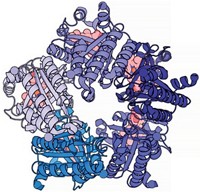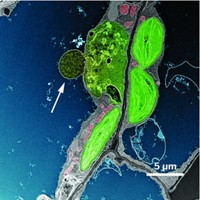Advertisement
Grab your lab coat. Let's get started
Welcome!
Welcome!
Create an account below to get 6 C&EN articles per month, receive newsletters and more - all free.
It seems this is your first time logging in online. Please enter the following information to continue.
As an ACS member you automatically get access to this site. All we need is few more details to create your reading experience.
Not you? Sign in with a different account.
Not you? Sign in with a different account.
ERROR 1
ERROR 1
ERROR 2
ERROR 2
ERROR 2
ERROR 2
ERROR 2
Password and Confirm password must match.
If you have an ACS member number, please enter it here so we can link this account to your membership. (optional)
ERROR 2
ACS values your privacy. By submitting your information, you are gaining access to C&EN and subscribing to our weekly newsletter. We use the information you provide to make your reading experience better, and we will never sell your data to third party members.
Biological Chemistry
Researchers Transplant Part Of A 24-Hour Biological Clock Into Live Bacteria
Synthetic Biology: Circadian clock proteins from cyanobacteria work inside noncircadian E. Coli
by Sarah Everts
June 12, 2015
| A version of this story appeared in
Volume 93, Issue 24
In a synthetic biology first, researchers have transplanted a component of a photosynthetic cyanobacterium’s biological clock into Escherichia coli, a bacterium not known to keep track of time. The feat could enable biological computing and reprogramming of a jet-lagged person’s gut bacteria to align digestion with a new time zone, says Pamela A. Silver of Harvard Medical School in Boston, who led the research (Sci. Adv. 2015, DOI: 10.1126/sciadv.1500358).
“The field of circadian biology has been waiting for this result,” comments Andrew J. Millar of Scotland’s University of Edinburgh. Other teams have engineered synthetic rhythmic circuits into organisms, but this is the first team to transfer part of an existing circadian clock between organisms. It is also the first engineered system to operate on a 24-hour cycle, Millar explains.
To achieve the feat, Silver’s team inserted into E. coli three cyanobacterium genes that code for a biological circuit. In this circadian circuit, one of the proteins, called KaiC, is phosphorylated at night and dephosphorylated during the day. The team also appended KaiC to a subunit of E. coli’s RNA polymerase. Then they capitalized on the fact that phosphorylated KaiC, with RNA polymerase in tow, binds to a region in E. coli’s DNA that activates the production of green fluorescent protein (GFP), which they also engineered into E. coli. The cells produced GFP in tune with KaiC’s 24-hour phosphorylation-dephosphorylation cycle, analogous to a day-night cycle.






Join the conversation
Contact the reporter
Submit a Letter to the Editor for publication
Engage with us on Twitter